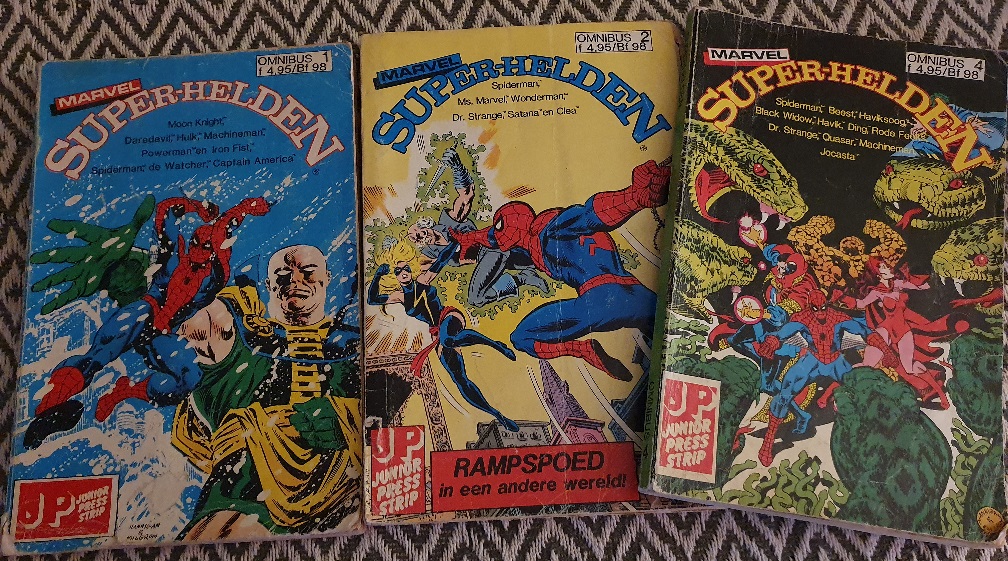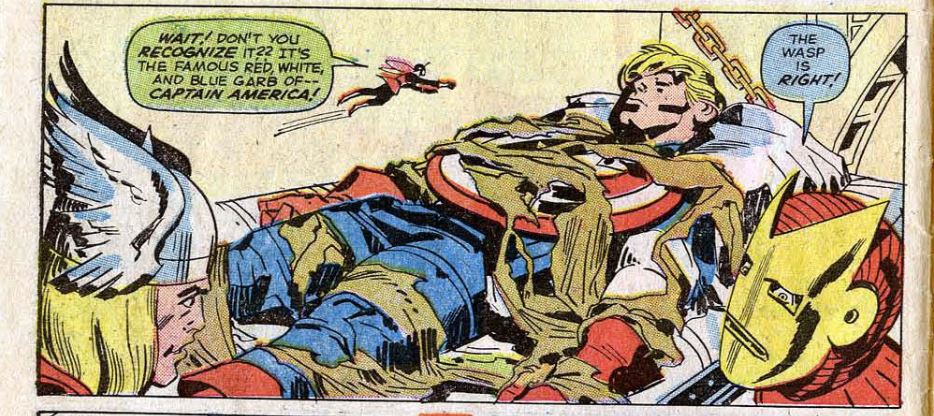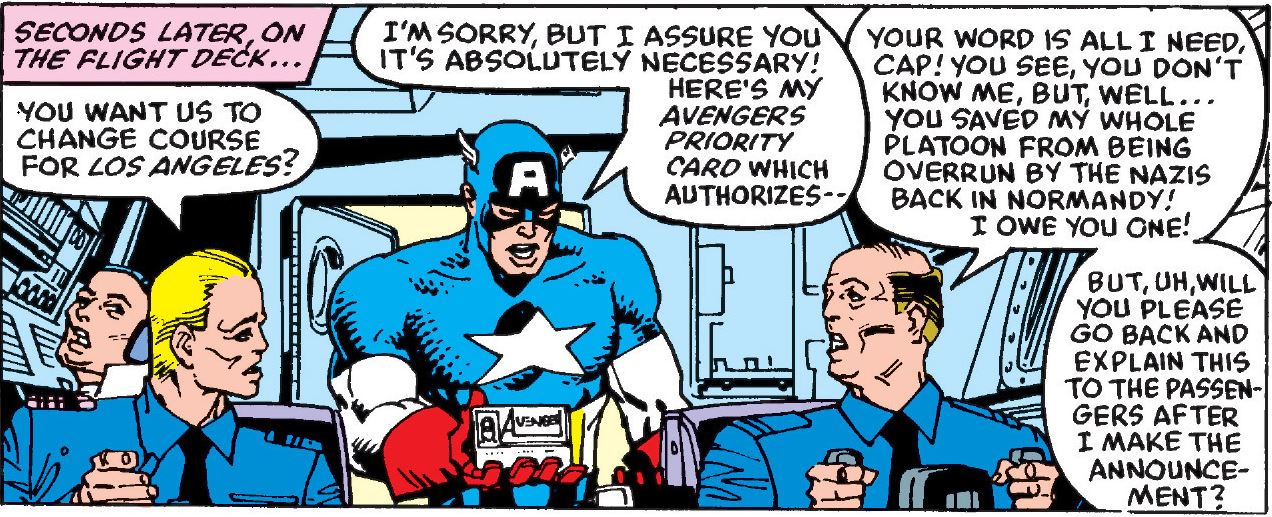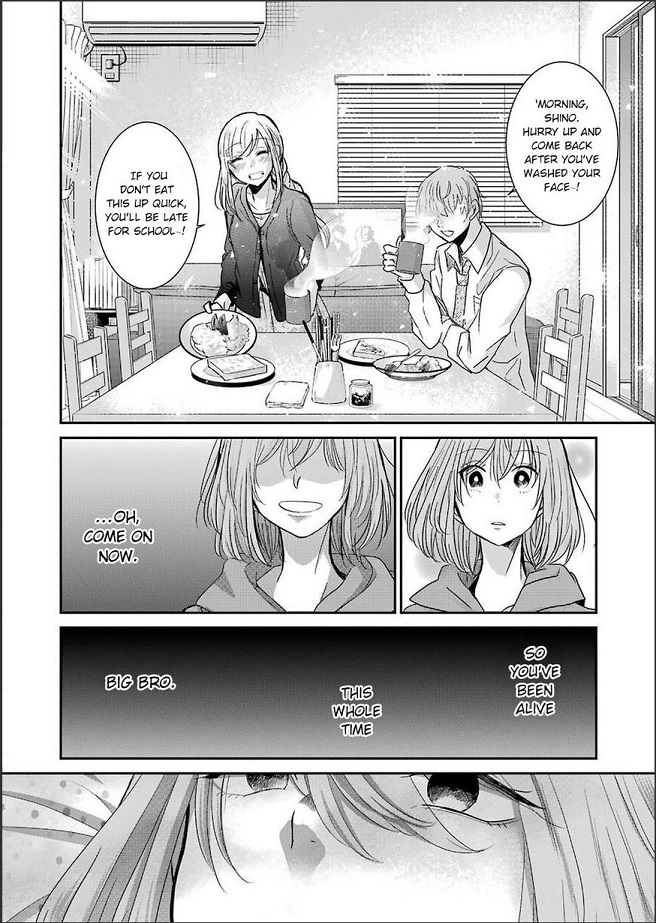I came across these again browsing through my comics collection and thought, I’d never be as excited for any comic anymore, no matter how good, as much as I was when I first got these as a thirteen or fourteen year old kid just getting into superhero comics.

That was 1988 or ’89, not long after this Dutch Avengers reprint had made me a Marvel fanboy. Of course I’d read comics before, since before I could actually read even according to my mum. But most of those were the usual European comics everybody grew up with: Asterix, Tintin, Lucky Luke etc. Mostly bought for us by our parents, or given as birthday presents and such. American comics were rarer; I remember reading some Star Wars and the occassional Spider-Man comic, but until I saw that issue of Avengers, they had been low on my radar. Once I was interested in them, I caught up to them with a vengeance (sic) and bought everything I could get my hands on from my meagre pocket money. And these particular books were a godsend: cheap reprint collections with more superheroes than you could shake a stick at. And at that time, more was always better.
Some context: Juniorpress was the licensee for Marvel comics in the Netherlands during the eighties and nineties. They didn’t publish every Marvel title of course, rather sticking mostly to the Spider-Man titles as well as the big four superhero teams: Avengers, Fantastic Four, X-Men and Defenders, as well as Conan, both as floppy and in proper album form. Other series were also tried with greater or lesser succes: a series like Wolverine was a predictable success, but New Mutants only lasted 21 issues and heroes like She-Hulk, Spider-Woman or Cloak & Dagger never made either, sometimes because the original American series had been cancelled as well.
For Dutch superhero fans of my age Juniorpress holds a special place in our hearts. Not just because it was through their reprints we learned about all these bizarre heroes and their adventures, but also because they seemed to care about what they published. There had been earlier companies publishing superhero comics, but these never felt like much love had been put into them. For example, Juniorpress was the first to credit their own staff as well as the original creators and also the first to identify where the stories they reprinted actually came from. They were also the first to introduce an actual editorial page and letter column, on the inside front and back cover of their publications. Because Dutch comics were sold in the same format as the American originals, but without advertising, each 32 page issue needed about eight to ten pages of extra material. That had previously been filled by just adding the next issue’s first couple of pages, but Juniorpress instead introduced their Limited Series as backup. That took something like The Punisher‘s first limited series and published as a backup in one of the Spider-Man series, before reprinted it as a collected edition. That was one way in which the company also tried out new titles and characters.
The other way was through this very series, Marvel Super-Helden, the Juniorpress equivalent of Marvel Team-Up or Two in One and indeed reprinting a lot from those series. Never a one for one reprint, rather they picked and choose the best stories from these titles, or even stories from entirely different series. That first omnibus e.g. starts with two Moon Knight issues, followed by two Iron Man stories, one guest starring Moon Knight before moving to a Marvel Team-Up annual with Power Man, Iron Fist and Machine Man, ending finally with two regular Marvel Team-Up issues starring Spidey and Captain America. All of which is gold if you’re thirteen, barely know any of these heroes except Spider-Man and you think two superheroes are better than one.
What made these omnibuses possible is interesting. Like the originals, these comics were distributed mostly through what you might call the newsstand: chain bookstores, cigar shops, news kiosks etc. As in the US that made these returnable; unlike in America, unsold copies had to be returned whole rather than just the front cover. Which meant Juniorpress had (large) stocks of back issues and one of the ways they got rid of this stock was to take several issues, strip them of their covers and repackage them with a new cover as an omnibus. They also did something similar to the sealed bags of comics you could get in toy stores in America, by bundling random back issues into a “summer holiday fun bag” and selling these through the same bookstores. In this way Juniorpress earned some extra money from unsold stock and discerning consumers like me got their superhero fix, cheap. Considering that each of these contained three normal issues and the price was slightly more than a normal issue cost, these were a bargain.
Coming in mostly ignorant, every time I bought or got one of these collections as a present was exciting. Just seeing that list of (unfamiliar) heroes on the cover made my pulse race. Three decades later, much more jaded than I was then, it’s a rare comic that gets me even half as excited.


